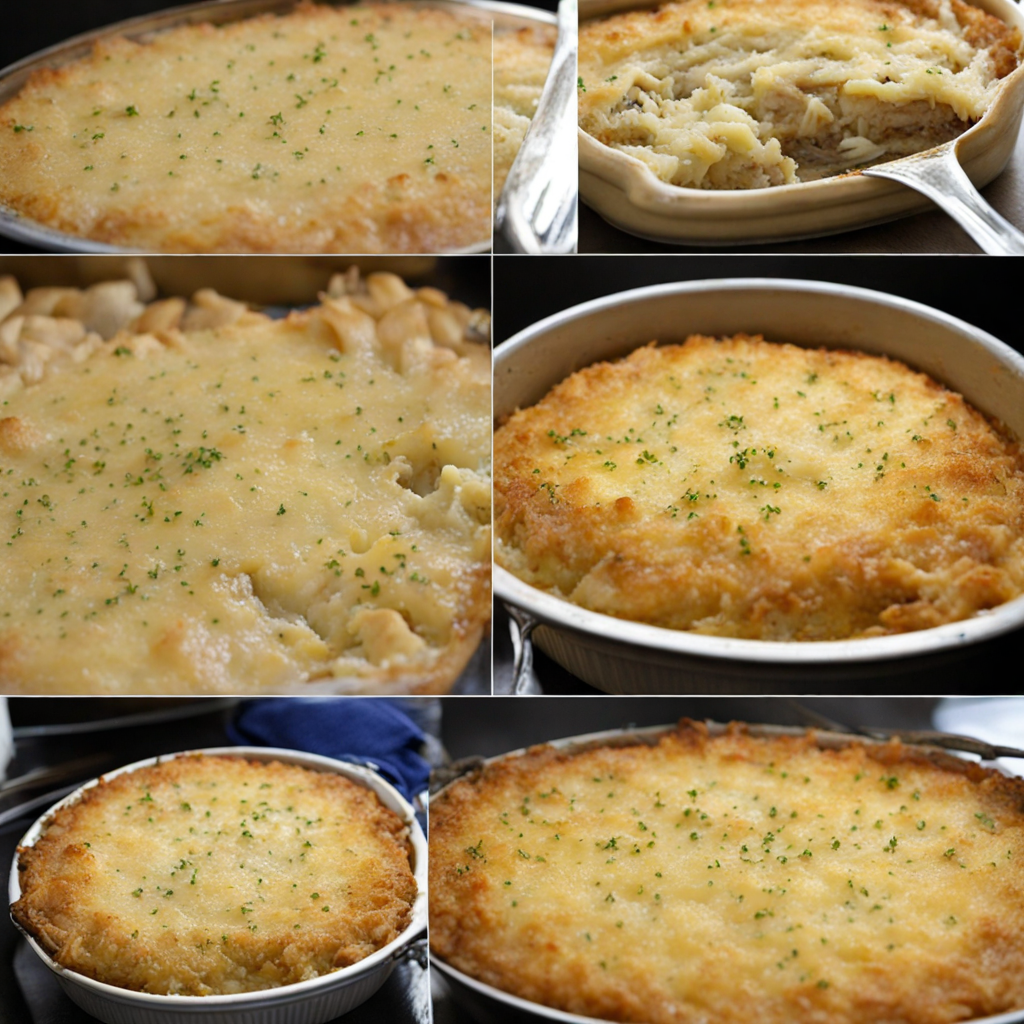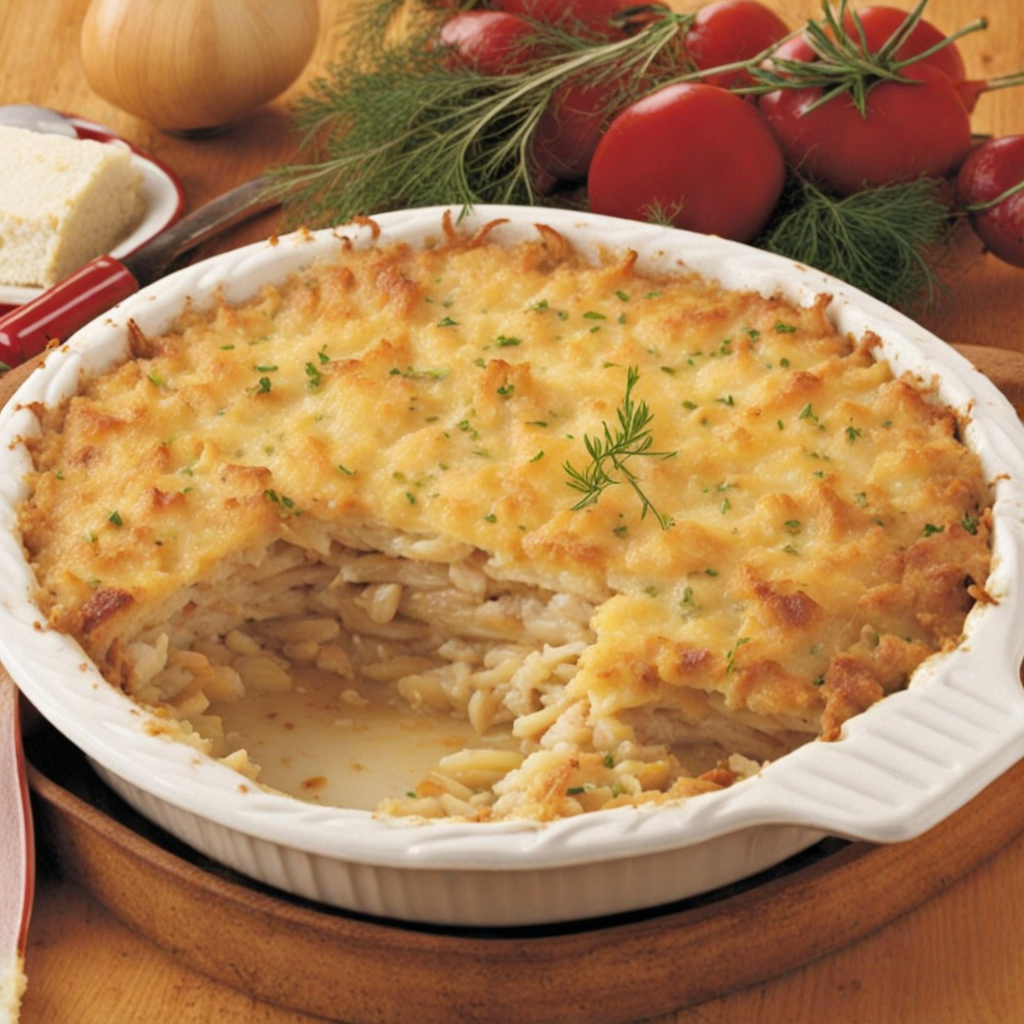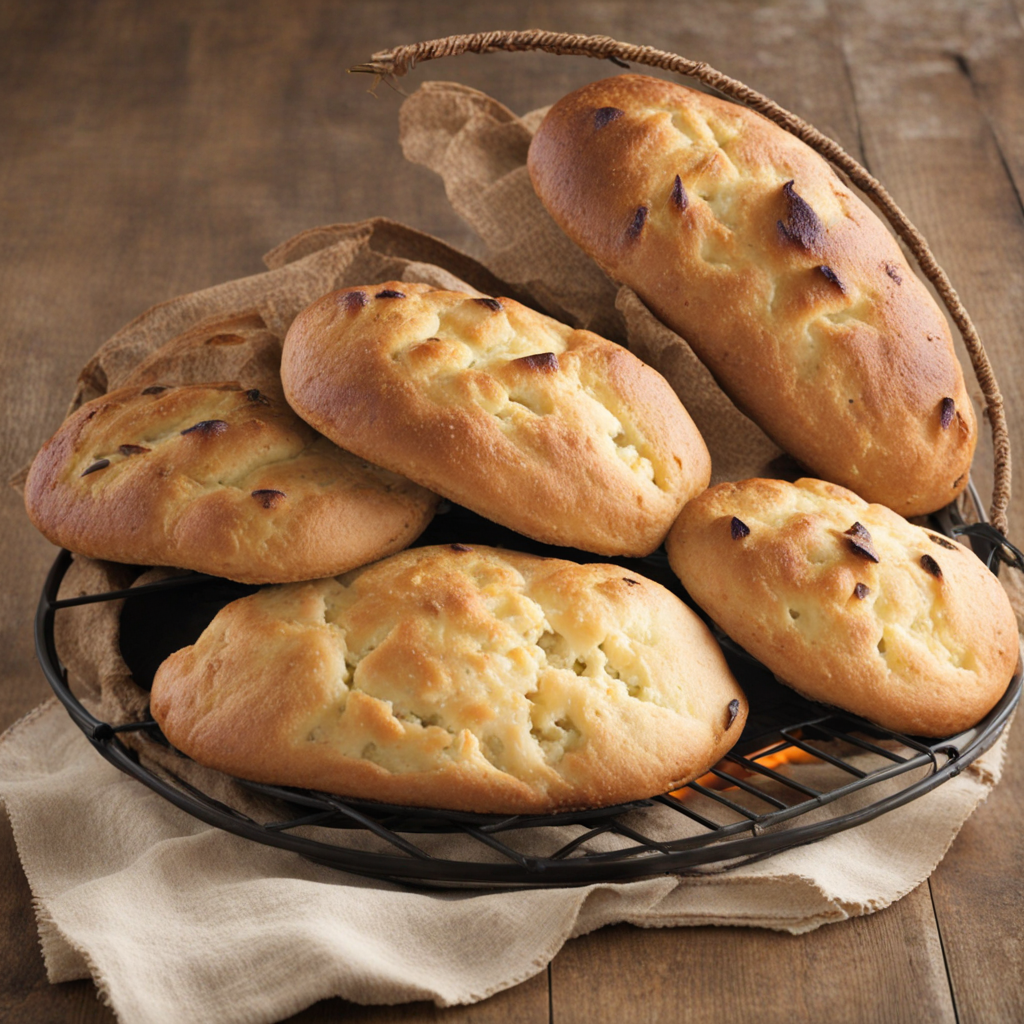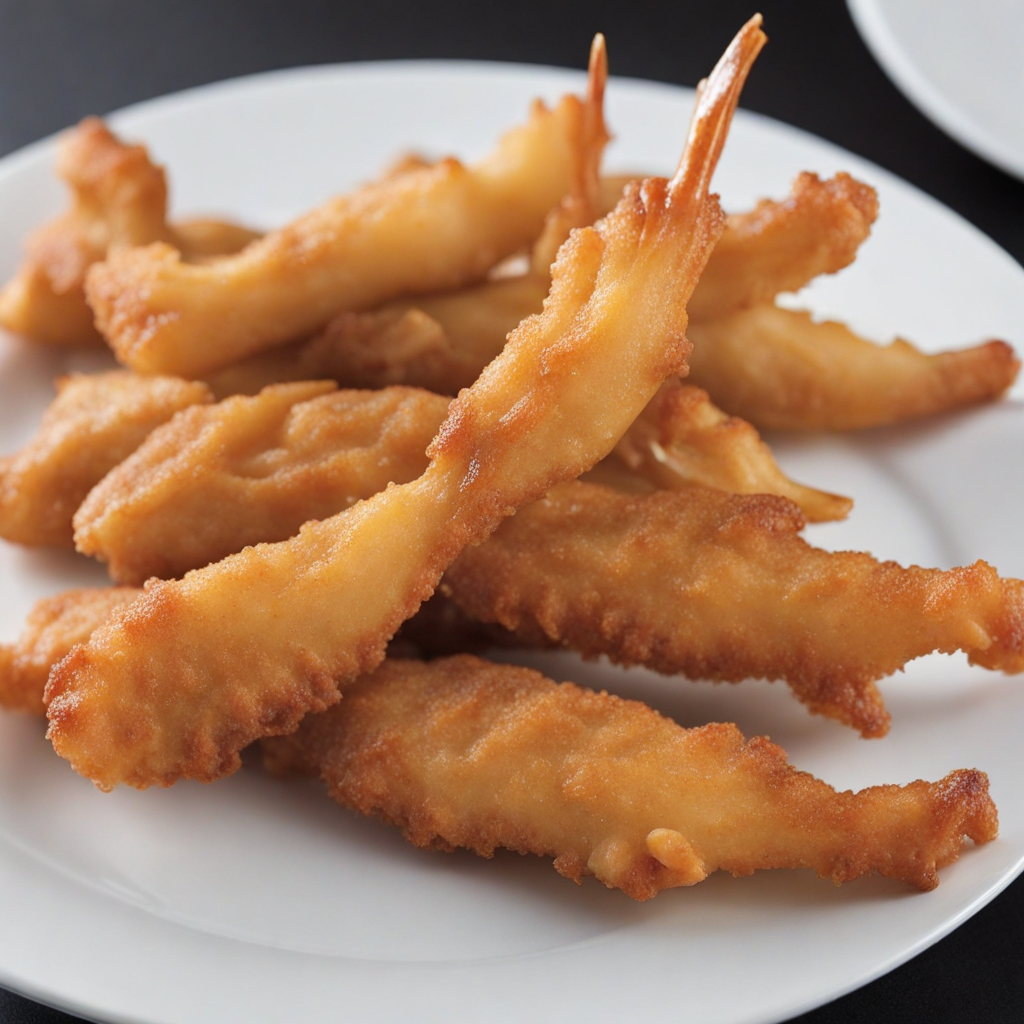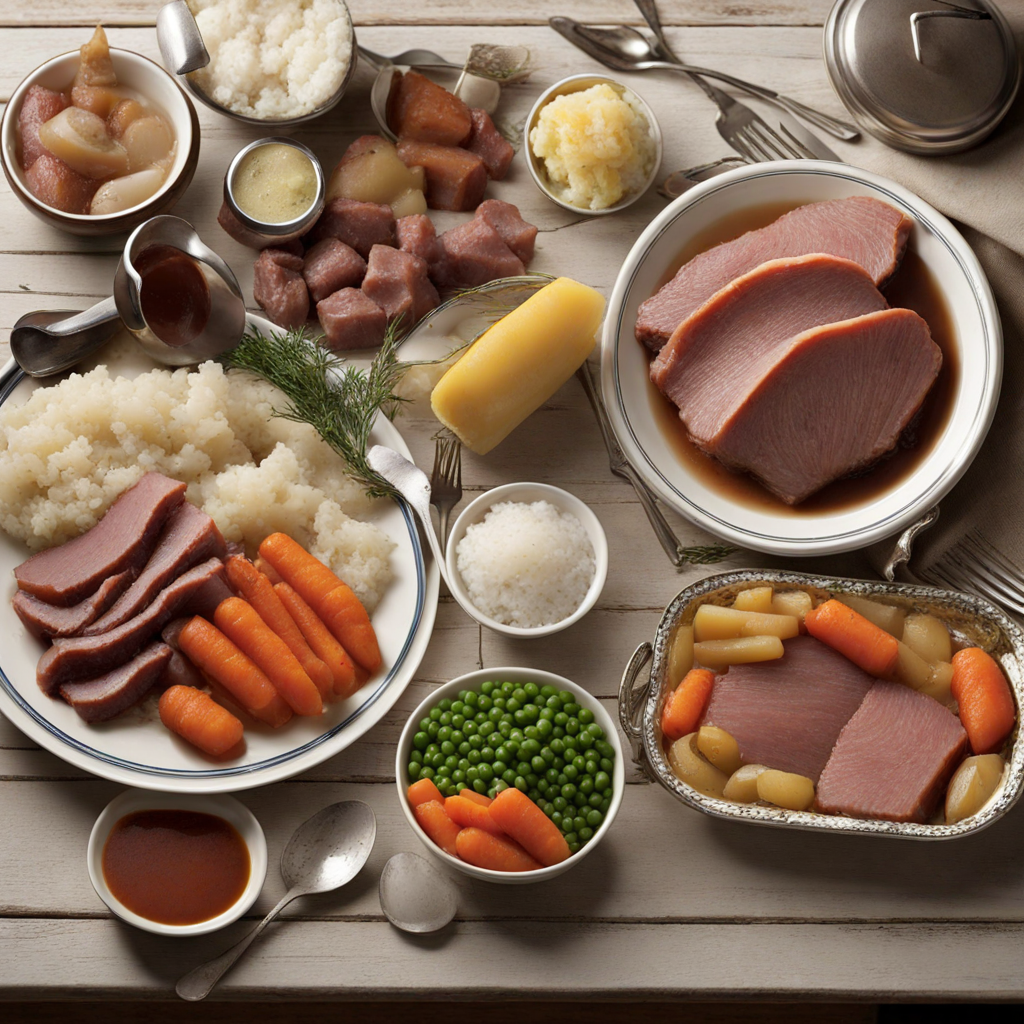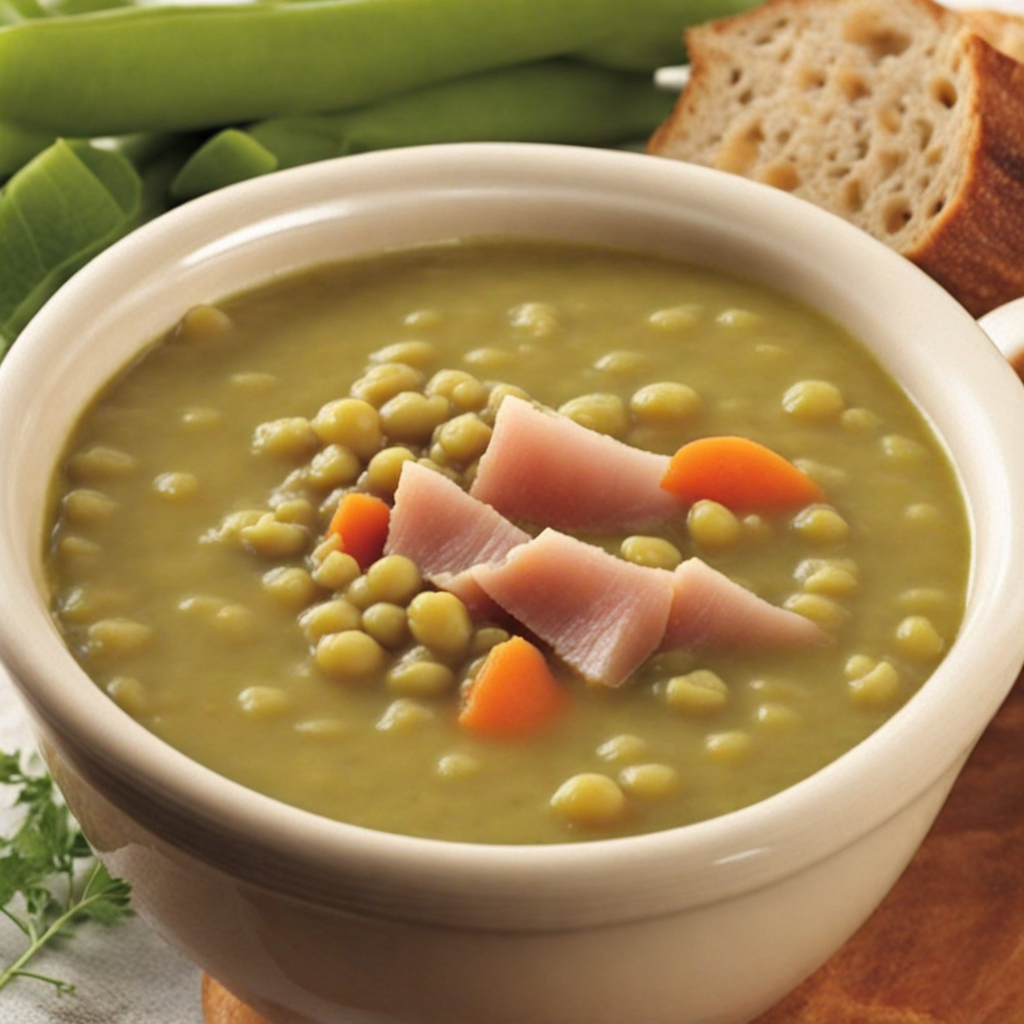Rappie Pie
Rappie Pie is a unique dish that hails from the Acadian regions of Canada, particularly popular in New Brunswick. This savory pie is characterized by its main ingredient, grated potatoes, which serve as a base and crust. The potatoes are traditionally prepared by squeezing out excess moisture, resulting in a starchy, flavorful mixture that forms the foundation of the dish. The pie is typically filled with seasoned meat, often chicken or pork, mixed with onions and spices, creating a hearty filling that complements the potato crust beautifully. One of the defining features of Rappie Pie is its rich, comforting texture. The grated potatoes, once baked, develop a crispy top layer while remaining soft and moist inside, allowing for a delightful contrast with the tender meat filling. The dish is often seasoned with herbs and spices unique to the region, which contribute to its distinct flavor profile. The combination of the crispy potato crust and the savory meat filling makes for a satisfying meal that is both rustic and comforting. Rappie Pie is typically served during family gatherings and festive occasions, reflecting its cultural significance within the Acadian community. It is often enjoyed with a side of gravy and pickles, which adds a tangy contrast to the rich flavors of the pie. For those looking to explore Canadian cuisine, Rappie Pie offers a delicious glimpse into the region's culinary heritage, showcasing the melding of simple ingredients into a dish that is both hearty and full of flavor.
How It Became This Dish
Tourte Râpée: A Culinary Treasure of Canada Origins of Tourte Râpée Tourte râpée, a traditional dish from the Canadian province of Quebec, is a remarkable culinary artifact that embodies the intersection of indigenous practices and French culinary traditions. The origins of this dish can be traced back to the early 17th century, when the French settlers arrived in New France (now Quebec) and encountered the local Indigenous peoples. The settlers found themselves in a land rich in resources and flavors, where they learned to adapt their culinary techniques and ingredients to suit their new environment. At its core, tourte râpée is a type of savory pie made primarily from grated raw potatoes, which serve as the crust, and a filling typically made from meat—often pork, but sometimes chicken or game. The name "tourte" refers to the pie itself, while "râpée" translates to "grated," highlighting the unique preparation method of the potato crust. This dish is emblematic of the resourcefulness of early settlers who needed to create meals that were both filling and sustainable, utilizing local ingredients that were readily available. Cultural Significance Tourte râpée holds a special place in Quebec's culinary heritage and is often associated with the rural, farming communities where it was developed. It not only represents a connection to the land but also to the traditions of family and community gatherings. Typically prepared for special occasions, such as harvest time or family reunions, this dish is a symbol of hospitality and togetherness. In Quebec, food is an integral part of cultural identity, and tourte râpée exemplifies how culinary practices are passed down through generations. The preparation of this dish often involves the entire family, with members gathering around to peel, grate, and fill the pie, turning the cooking process into a communal event. This collective experience reinforces familial bonds and preserves cultural practices that are essential to Quebec's identity. The tourte râpée is also a reflection of the region's resourcefulness and resilience. In times of scarcity, the use of inexpensive and readily available ingredients like potatoes became a necessity. As a result, this dish emerged as a comfort food, providing sustenance during hard times while also nurturing the spirit of community and togetherness. Development Over Time As Quebec evolved through the centuries, so too did the tourte râpée. In the 19th century, industrialization and urbanization began to reshape the social landscape. Many rural families migrated to cities in search of better opportunities, taking with them their culinary traditions. This migration led to a broader dissemination of tourte râpée, which began to appear in urban households and restaurants, albeit with some modifications. The traditional recipe has seen a variety of adaptations over time. While the classic version remains popular, new interpretations have emerged, often incorporating different meats or even vegetarian options. Chefs and home cooks alike have experimented with the dish, infusing it with global flavors while maintaining its essence as a comfort food. The introduction of spices and herbs from other cultures has added new dimensions to the flavor profile, making tourte râpée a versatile dish that can span different culinary influences. In recent years, there has been a resurgence of interest in traditional foods, driven by a broader movement toward local and sustainable eating. This trend has led to a revival of interest in tourte râpée, with chefs and home cooks alike seeking to honor its historical roots while also exploring innovative interpretations. Food festivals and culinary competitions in Quebec have showcased this dish, celebrating its rich heritage and inviting a new generation to embrace it. The revival of tourte râpée has also been aided by the increasing visibility of Quebec's gastronomy on the national and international stage. As chefs from the province gain recognition for their commitment to local ingredients and traditional recipes, tourte râpée has emerged as a symbol of Quebec's culinary identity. It has become a dish that not only nourishes but also tells the story of a region steeped in history and cultural significance. Tourte Râpée Today Today, tourte râpée is more than just a meal; it is a celebration of Quebec's rich history and cultural heritage. It is often served at family gatherings, celebrations, and community events, where it continues to embody the spirit of togetherness. Furthermore, the dish has become a point of pride for many Quebecois, who see it as part of their culinary identity. In contemporary cuisine, tourte râpée has found its place in restaurants that focus on traditional Quebecois fare, where it is often served alongside other regional specialties. Chefs are increasingly recognizing the importance of storytelling through food, and tourte râpée serves as a perfect example of how a dish can encapsulate a community’s history, values, and traditions. As globalization continues to influence culinary landscapes, it is vital to recognize the significance of preserving traditional dishes like tourte râpée. By celebrating and adapting these foods, we honor the past while ensuring that they remain relevant in modern culinary discourse. The continued appreciation and evolution of tourte râpée reflect a broader commitment to preserving cultural heritage through food. Conclusion In conclusion, tourte râpée is much more than a simple potato pie; it is a reflection of the history, culture, and resilience of the Quebecois people. Its origins rooted in the blending of indigenous and French culinary practices highlight the adaptability of food to different environments and communities. As it continues to evolve over time, tourte râpée serves as a testament to the importance of food in shaping cultural identity, fostering community bonds, and preserving the rich tapestry of culinary heritage. In every bite of this comforting dish, one can taste the history and warmth of Quebec, making it a cherished treasure of Canadian cuisine.
You may like
Discover local flavors from Canada


